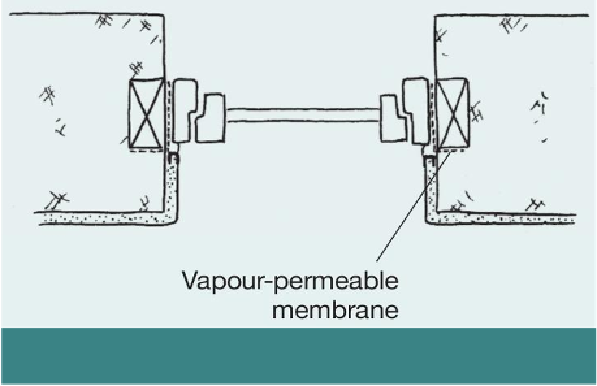Civil Engineering Reference
In-Depth Information
chemicals and high embodied energy associated with conventional sealants, will retain its
flexibility over time. In contrast, conventional mastics tend to go hard and brittle as they
dry out, making them unsuitable for use with lime renders. Another alternative is to design
out the bead altogether by extending the hempcrete over the window frame (see Figures
Within the structural frame, timber studs to which window or door frames are fixed should
be protected with a 'breather' (vapour-permeable) membrane (see
Figure 17
). This is ne-
cessary because it is an area with a less-than-ideal covering of hempcrete, which is there-
fore susceptible to water ingress. An alternative would be to use hardwood or other rot-res-
istant timber in vulnerable locations such as these.
The plinth is designed to keep the hempcrete section of wall clear of any splashback from
rain hitting the ground, and should therefore be at least 250mm high. An increased plinth
height should be considered if the wall is in the drip zone of trees or exposed to the pre-
vailing weather.
Figure 17.
Timbers around openings are vulnerable to moisture and need ad-
ditional protection.

Search WWH ::

Custom Search